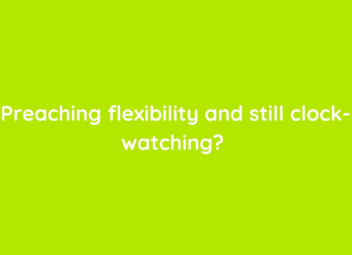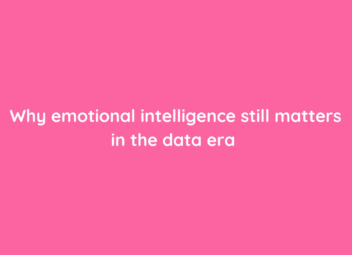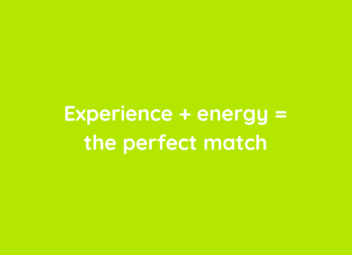
From beauty bloggers to Mr Beast… what does YouTube mean for your brand?
In a landscape where short-form video content has become king, it can be easy to forget about TikTok’s older cousin, the OG internet entertainment platform - we’re talking about YouTube, of course.
In this week’s blog, we’re taking a look at how YouTube has evolved throughout the years, and what it means for your brand.
The growth and ‘Golden Era’ of YouTube
Launched in 2005 by three former PayPal employees, YouTube was the internet’s first video-based platform, allowing users to view, like and comment on video content uploaded from various ‘channels’. After being bought by Google in 2006, YouTube quickly became one of the most popular internet applications, with early content spanning parody music videos, amateur animations and viral bloopers (Charlie bit my finger, anyone?).
However, the platform proved it was so much more than cats playing the keyboard with the evolution of the ‘YouTuber’ and ‘vlogging.’ Those of us who came of age during the 2010s will no doubt remember what is sometimes referred to as the ‘golden era’ of YouTube, a period spanning from around 2010-2016 in which YouTube was at its prime. Millions of viewers would tune into the app on the regular to watch makeup tutorials from Zoe Sugg (aka Zoella), play-along videos from Swedish gamer Felix Kjellberg (aka Pewdipie), or comedy sketches from US-based channels like Smosh or Shane Dawson. Popular YouTubers amassed millions of subscribers during this time, achieving particular success for their personality-led, blog-style (vlog) content, instructional ‘how-to’ videos, sketches and of course by collaborating with one another.
This era saw YouTube launch the careers of Justin Bieber and Shawn Mendes, and the invention of YouTuber conventions like VidCon - where fans could pay to meet creators in person, or buy ‘merch’ from their favourite channels. There was something delightfully amateur and innocent about early YouTube - creators tended to be regular people with a passion, hobby or oftentimes just a camera in their bedroom. The sophisticated editing and brand deals came later (more on this below).
So, who’s watching?
If you subscribe (pun intended) to the belief that YouTube is on the way out, you may be mistaken. As of January 2025, there are a reported 2.53 billion YouTube users and therefore a huge potential reach for your brand message. For context, the same dataset ranks Instagram’s reported reach at 1.74 billion, though this is growing steadily, while YouTube’s audience has for the most part remained stable over time (it’s also worth noting that ad reach is not always a direct proxy for how many users are active and tuning in regularly). That being said, the metrics would suggest that in 2025, YouTube is still the dominant video platform, and its integration with Google means it’s unlikely to be overtaken any time soon.
In terms of audience demographics, the platform reports a fairly even distribution, the largest percentage of users (12%) being men between 25-34 years old. According to Statista, the most popular YouTube channels in 2025 include Mr Beast, several Indian record labels and a plethora of children’s entertainment channels (if you’re familiar with Cocomelon and/or have small children, this shouldn’t come as a surprise.)
However, these channels can often be outliers, with attributing factors like geographic base and how users are consuming content skewing the data (again, Cocomelon is a massive culprit).
Long-form content and the creator economy
Children’s videos aside, it remains true that YouTube is one of the strongest platforms for community building. As we’ve mentioned, the site was one of the first examples in demonstrating how creators could make profit from their popularity online. The YouTube Partner Programme launched in 2007, with monetary incentives for creators to reach a certain number of subscribers or views on their videos. On top of this built-in monetisation, YouTube was also where some of the first influencer sponsorships and paid partnerships were born. Integrating products and recommendations into otherwise standard vlog content or educational videos was a revolution in parasocial communication, allowing brands to reach previously untapped audiences with the assistance of creators and their community.
One strength of YouTube versus other social platforms for brands is the fact that there is potential to give more space to nuanced topics. If your message is more complex than a 60-second video will allow, consider long-form content! This style of video can lend itself better to giving more well-rounded reviews and demonstrations than other platforms.
Controversy
While useful for community building and long-form content, it’s important to consider the implications of using YouTube to promote your brand. The climate in recent years on the platform has shown it can be volatile, with the vaguest whiff of scandal causing untold reputational damage for creators at the hands of their subscribers. Profiting off a loyal fanbase for upwards of a decade can mean that some YouTubers are held to higher standards than other kinds of content creators.
We’re all too familiar with the thumbnail for the infamous YouTuber ‘apology’ video (heed our advice and whatever you do, DO NOT sing).
There are also concerns around misleading, clickbait-y titles and misinformation being spread on the platform - but such are the dangers of the internet! As with any successful para-social foray, the key is to do plenty of background research around who might be best suited to partnering with your brand (for more insights on how to navigate this changing landscape, see here).
To summarise, we think unless you’re living under a rock, you would be mistaken to think that YouTube is now totally irrelevant. It was and continues to be a dominant force and leader in video content, as well as a potential medium for your business to reach the right people.
Like and subscribe for more content like this…


